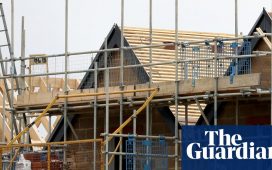Unlock the Editor’s Digest for free
Roula Khalaf, Editor of the FT, selects her favourite stories in this weekly newsletter.
It has been a rocky ride for investors in some parts of the property market — the favourite asset class of the wealthy — since the coronavirus outbreak four years ago. The office sector has been the main casualty as people continue to work from home against a tough economic backdrop of higher interest rates.
The slump has been global. Across Europe office valuations have tumbled more than 30 per cent in cities such as London, Brussels and Zurich since the end of 2019, according to real estate research group Green Street. In the US, the market has been savaged with vacancy rates at generational highs while visits to the office have plummeted.
The falls in valuations have been particularly steep in San Francisco, where technology companies are more relaxed about working from home. Between March 2019 and March this year, visits to the office dropped 50 per cent in the Californian city, says location data group Placer.ai. Even in New York, where Wall Street banks have put pressure on staff to return to the office, visits are down 17 per cent.
At first glance, this looks like bad news for the rich, who put about a third of their assets into property, rising to about a half in the Middle East and Latin America, and are big investors in commercial real estate, say wealth managers.
However, other parts of the commercial market have fared better. Prices in the US retail property sector have been buoyed by a lack of supply. New tracking footfall technology has also helped companies pick the best locations for business, with the most popular retail sites and malls attracting shoppers as worries about Covid-19 fade.
In the industrial sector, which includes warehouses, the news has been upbeat. It was boosted by the pandemic as the ecommerce boom prompted online retailers such as Amazon to look for more space to store goods. Although checked by the rise in interest rates since the middle of 2022, the market is showing signs of recovery in big cities such as London, according to Green Street data.
The residential sector is also in recovery mode. US house prices are back at the highs, having bounced off recent lows at the start of 2023, says the S&P CoreLogic Case-Shiller index. The biggest support is a lack of housing stock, with owners reluctant to move and lose low mortgage rate deals agreed before monetary tightening. “In markets with very long fixed rates, the US in particular, this has meant the stock of property for sale has fallen by about 30 per cent compared with normal market levels,” says Liam Bailey, global head of research at property agent Knight Frank. “Relatively strong investment returns and wage growth has helped demand remain healthy. This imbalance in supply and demand has helped push prices higher,” he adds. And it is not just in the US where the market is on the up. From Toronto to Singapore and Sydney valuations are mostly rising, according to Knight Frank research.
More positive news can be found in the market for listed real estate investment trusts, Reits — widely used by wealthy investors because of their liquidity. They have on occasion outperformed the wider stock market in the US in recent weeks, while their private cousins, where performance remains patchy, are expected to start offering better returns.
Of course, the property market’s health depends on the US Federal Reserve and the central banks that decide monetary policy. With interest rates expected to stay at record 23-year highs of 5.25 per cent to 5.5 per cent in the US for longer than expected, investors and buyers may hold back from big purchases.
Still, the path for rates is downwards and investors are largely confident inflation can be contained. As Matthew Morgan, head of fixed income at Jupiter Asset Management, put it recently: “We are facing the last hurdle in the killing of inflation, particularly in the US. But in the longer term, I think inflation will be defeated and there will be a soft landing for the US economy.”
The outlook on the high street in many countries is also positive or at least more positive than it was a year or 18 months ago, which is crucial for a property market that relies on the real economy to drive demand for offices, factories and houses. This is why investors are betting that valuations across the property sectors will rise over the next five years as lower interest rates and a shortage of supply propel them higher.
It has been a difficult time for property as the pandemic, wars in Ukraine and the Middle East and most critically higher interest rates have arrested valuations in parts of the market around the world. But for the long-term investor, which includes the ultra rich and the family offices that serve them, the attraction of bricks and mortar remains compelling. Although the past is not always a good guide to investments and the direction of a market, the historic upwards trend in property is unlikely to be broken.
It means wealthy investors should stick with real estate as their favourite asset class.
David Oakley is acting editor, FT Wealth. Follow him on X
This article is part of FT Wealth, a section providing in-depth coverage of philanthropy, entrepreneurs, family offices, as well as alternative and impact investment















